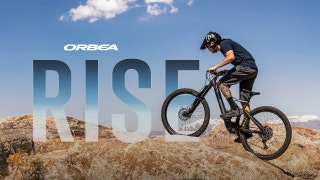Featured Brands
Recommended Products
Black Friday BF20
Get free shipping, on most items, with your $50 purchase today! Same day shipping on most orders if placed by 3pm PST.
PLEASE NOTE:
This offer is only available to physical shipping addresses in the 48 continental United States (no PO Boxes), and some exclusions apply.
Oversize Charges
Some large and/or heavy items are subject to additional oversize charges that are separate from standard shipping costs.
Bike Build Process
All bikes are built, tested, tuned, and ready to ride upon shipment. The bike build process typically takes 2-3 days to complete depending on the bike model and the complexity of the build.
Stock Status
Orders for in-stock items placed by 3PM PST usually ship on the same day. Orders that include special-order or backordered items may be subject to shipping delays depending on product availability. Refer to estimated delivery times in cart when selecting shipping options.

Our Gear Advisors are Ready to Help.
Together, chainrings and spiders are at the core of your bike’s drivetrain, helping transform the force you put into your pedals into energy that propels your bike down the road or trail. Chainrings, like the cogs that make up your cassette, are machined wheels of metal that have evenly-spaced teeth around the outer edge to engage your chain. Spiders, which typically have multiple arms, are what hold the chainring in place on your bike.
Most road bikes have two (and occasionally three) chainrings, with the smaller rings located inboard of the larger chainrings. Most modern mountain bikes are spec’d with just one chainring (known as a 1x set-up), though you will still encounter some riders using 2x and occasionally 3x systems, though the latter is increasingly rare.
Chainrings vary in size and shape. Most are round, but oval chainrings are also an option, purporting to offer more overall efficiency by helping minimize the deadspot in you pedal stroke. Teeth shape also varies, with 1x specific chainrings usually utilizes either a wave or thick-thin tooth profile to enhance chain retention, and lessen the chance of dropping your chain.
Size (indicated by the chainring’s number of teeth) typically run from 26t to 53t, though you find chainrings as small as 20t and as large as 60t in rare instances. The more teeth, and thus larger, your chainring is the harder it is to pedal, but the faster it propel your bike, while chainrings with fewer teeth are easier to pedal, but will not produce as much speed.
So for instance a Tour de France-level sprinter will almost always opt for a 53/39 chainring set-up, while your average weekend warrior road biker may be better suited to a 50/34 due to the ease of climbing it avails. (A 53/34 is typically not an option because the larger disparity in chainring size will produce less-than-optimal shifting performance.)
Another important consideration is chainring attachment, which can be direct mount or bolt on. If seeking the latter, you will need to know the specific number of bolt holes (usually 4 or 5) and also the bolt circle diameter (or BCD).
As you’ve surely guessed by now choosing the right chainrings and spiders can be a confusing process. But if you have any question, please call one of our JensonUSA Gear Advisors at 951-234-7554, who can help walk you through the decision making process and assure you get a compatible component that meets your specific cycling needs.
LIMITED TIME BRAND SALES
SAVE 20% OFF ONE FULL PRICED ITEM
SHOP THE GIFT GUIDE
SHOP NOW
SHOP NOW
SHOP NOW
SHOP NOW






